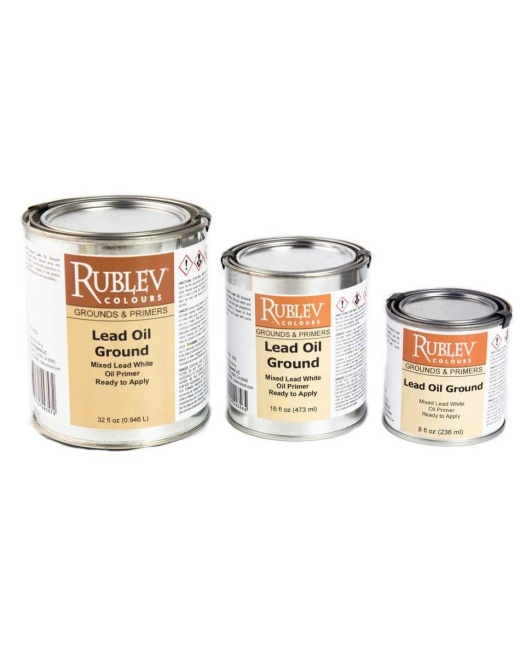Elevate Your Oil Painting Game
Rublev Colours Lead Oil Ground is the premium choice for artists seeking a reliable and high-quality foundation for oil paintings. This expertly crafted blend of white pigments and linseed oil serves as a semi-absorbent ground that effortlessly meets the specialized needs of professional and recreational painters alike. Designed to dry seamlessly within a span of two days to a week, depending on temperature and humidity conditions, this oil ground ensures a smooth start to your painting process, allowing you to focus on your artistic expression.
Formulation that Excels
Carefully formulated from a precise combination of ground calcite, lead white, and titanium white, Rublev Colours Lead Oil Ground creates a robust, flexible film that balances absorbency with durability. The selected grade of calcite not only provides optimal penetration control but also boasts inherent chalk resistance, making it an exceptional choice for a variety of substrates. This product ensures that your paint layers adhere exceptionally well, fulfilling the critical attributes necessary for a foundation ground: adhesion, flexibility, and blister prevention.
Unmatched Characteristics
The unique proprietary blend of alkaline-refined and heat-bodied linseed oil found in Rublev Colours Lead Oil Ground prioritizes good adhesion while controlling oil penetration into the support. This careful selection guarantees that your paint layers will maintain consistency and strength over time. Whether you're painting on panels or canvas, this oil ground provides a stable, reliable surface that significantly minimizes brush and knife marks, ensuring your artistic vision is realized just as you intended.
Safe for Your Creativity
Safety in art materials is paramount, which is why Rublev Colours Lead Oil Ground is formulated without zinc oxide, a common ingredient that can lead to undesirable cracking and blistering in oil paintings. Instead, it integrates a blend of cobalt, zirconium, and calcium driers, enabling it to dry rapidly and reliably. A built-in anti-skinning agent ensures that this product remains usable for extended periods when stored correctly. For artists who prioritize safety without compromising quality, Rublev Colours Lead Oil Ground is a flawless choice.
Practical Guidelines for Use
For best results, it's crucial to stir Rublev Colours Lead Oil Ground well before use. A bristle brush is ideal for applying an even first coat over your canvas or panel, ensuring you remove any excess and smooth the surface adequately. Multiple coats can help achieve a more polished look, particularly for those aiming to perfect their finish. Before beginning to paint, allow each coat to dry completely, which could take approximately a week at the most optimal conditions. Follow the directions carefully to enjoy unparalleled painting stability and quality.
